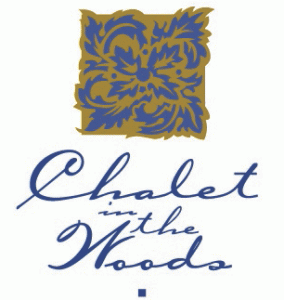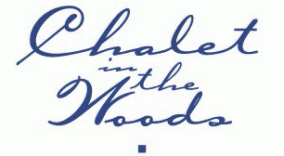Brands
The little shop on Norrtullsgatan 3 in Stockholm is a haven for creativity and design. If you’re lucky you’ll catch both Bengt and Lotta in there at the same time; the couple that met at the University College of Arts, Crafts and Design in Stockholm and who have enriched the world with their playful designs ever since.
We have our own lines of table linens, bath towels, kitchen towels, aprons, dresses, shirts, bed linen and PJs, along with our cards and beautiful aromatic cedar boxes.
Per (the 11th generation) The Ekelund family is delighted to meet you. How can a brand which has existed over hundreds of years continue to speak to the modern market – the contemporary consumer? In today’s throwaway society, this challenge is perhaps greater than ever. Every day we’re faced with a plethora of messages and choices, which is why the team at Ekelund ask the burning question: how can we, a family business with roots in the 17th century, stay up to date? We already know the answer.
What started as a glass factory in Iittala, Finland, today celebrates generations of essential objects that are made to enrich people’s everyday lives. We believe objects should be distinctive, combinable and multi-functional, with lasting design that inspires individual use and expression.
As a company based in Finland, where quality, aesthetics and functionality are important values, Iittala believes in interior design that lasts a lifetime.
The Klippan Yllefabrik AB was founded in 1879. Today, the fourth and fifth generations are working side by side, developing the company. Our philosophy is to combine Swedish design with our long tradition of textile knowledge.
We have developed a textile collection in collaboration with famous Swedish designers. All our blankets and throws are manufactured in our own factory. We only use natural material in our products and try to use eco-material as much as possible.
In 1917 Juho Annala, the grandfather of Juha Hjelt, founded a felt boot factory in Lapua, Finland. In the 30's, Juha's father and uncle bought first weaving machines, and industrial weaving began. This was the beginning of the story of Lapuan Kankurit.
The original weavers of Lapua, the weaving masters, took this yarn, and went to work. For them, the yarn was the thread of life. From this yarn they decided to weave a living for themselves, their families and generations to come. This was the beginning of Lapuan Kankurit – The Weavers of Lapua. Our roots go all the way back to 1917, when the family established their first textile factory.
Melin Tregwynt, a small white washed woollen mill, can be found in a remote wooded valley on the Pembrokeshire coast.
There has been a mill on this site since the 17th century, when local farmers would bring their fleeces to be spun into yarn and woven into sturdy Welsh wool blankets.
Weathering wars, recessions and the passing of time, the looms have continued to work their magic. Melin Tregwynt fabrics are simple in spirit, satisfying in quality and timeless in design.
We weave scarves using only the finest quality yarns on Hattersly looms that are almost 200 years old. Because all our scarves are individually woven they have a selvedge on each side ensuring they will last and its gives each scarf its quality finish. All of our colourful products are made from premium yarns such as wool, mohair and alpaca. We complement our ranges with Ladies and Gents Tweed headwear in both traditional and contemporary style.
We’ve celebrated 25 wonderful years with Oleana, enjoying the lovely romantic designs, color and style of Solveig Hisdal. But as you probably know, one of the constants in life is change. Oleana was sold to a family member, and Solveig retired. Oleana no longer seems a good match for the Chalet. We still have a few Solveig-designed pieces, such as scarves and cuffs, a few sweaters that were samples, skirts, belts and other bits and pieces.
PaaPii is a Finnish design company. All of our clothes are made in our own factory, which works on solar power.
Inspiration comes from everyday life: nature, poems, and people too. We make our clothes with the sun! Our fabrics are made of organic cotton and are suitable for sensitive skin. Our clothes are made ecologically and ethically in Finland.
“We here at PaaPii want to do things right and well – it has worked great for us so far!” - Anniina Isokangas
Finding the best knife or axe can be a challenge. Growing up in rural Finland, Heimo Roselli started making his own, finding the balance of hardness and flexibility, enabling him to sharpen steel to last a lifetime.
Heimo became a master metallurgist, an expert in producing steel of the highest possible quality. The brand Roselli grew its reputation for unusual durability, a steel that was both harder and sharper than anything else.
In the 19th century, the Breton Fisherman Sweater was designed to protect fishermen from the elements during long days and nights at sea. At the helm of the sweater’s creation were the wives of the merchants and fishermen of Brittany. Applying a secret-stitch technique preserved by generations of mothers and daughters, their pullovers surpassed all others, granting warmth and resistance to water and wind.
Tyrihans
For over 20 years, we have produced high quality textiles. They aim to protect Norwegian cultural heritage by recreating fabrics, shawls and other products. They use nature’s own fibres in their products, such as wool, silk, linen and cotton to ensure that the collection maintains top of the range quality.
UK-based British design studio, Wallace Sewell, was established by Harriet Wallace-Jones and Emma Sewell after graduating from the Royal College of Art. Their diverse portfolio includes scarves for the Tate museums as well as moquette fabric designs for Transport for London’s underground seating. When exhibiting for the first time in 1992, their pieces created much enthusiasm and interest, particularly from Barney’s, New York who placed an order for scarves. This proved instrumental in helping to lay the foundations of the Wallace Sewell brand.

















